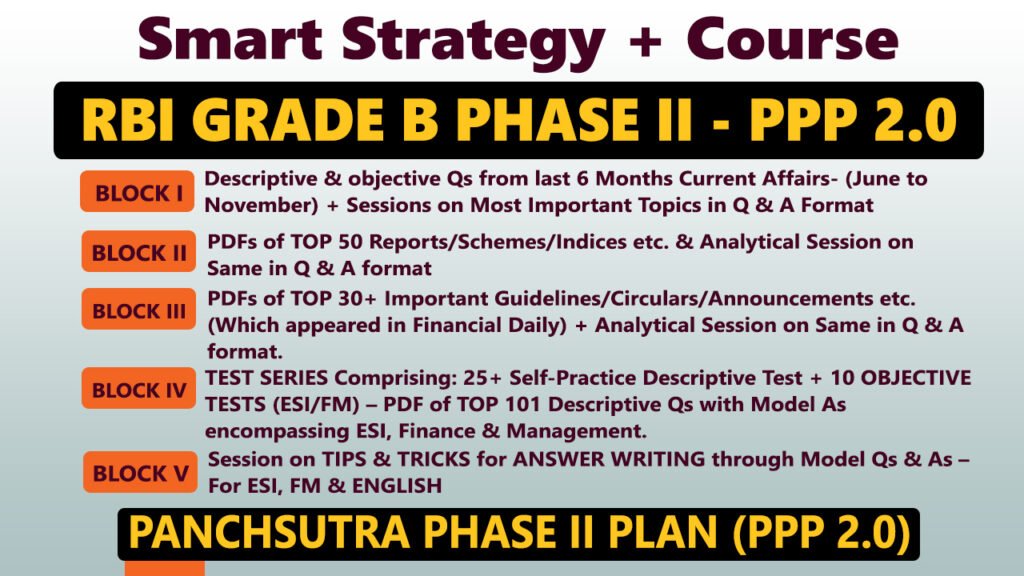Daily Current Affairs Quiz
16 September, 2025
National Affairs
1. Centre to Launch ‘Swasth Nari, Sashakt Parivar Abhiyaan’ & 8th Poshan Maah
Source: TH
Context:
The Central Government will launch the ‘Swasth Nari, Sashakt Parivar Abhiyaan’ (Healthy Woman, Strong Family Campaign) on 17th September 2025, alongside the 8th Poshan Maah (Nutrition Month). The initiative will be inaugurated by Prime Minister Narendra Modi.
Key Highlights:
- Objective: To strengthen women’s health as a foundation for family well-being and national development.
- Joint Initiative: Led by the Ministry of Health & Family Welfare and the Ministry of Women & Child Development.
- Poshan Maah 2025: Part of the ongoing POSHAN Abhiyaan, focusing on nutrition awareness, women’s health, and child development.
- Approach: Promotes the idea that empowering women through better health ensures healthier families and stronger communities.
2. Manki-Munda System
Source: IE
Context:
In Kolhan region of Jharkhand, members of the Ho tribal community protested following the removal of certain Mundas, alleging government interference in their traditional Manki-Munda system of self-governance. The protests underline the sensitivity of tribal autonomy and customary governance structures in India.
About Manki-Munda System:
- A traditional, decentralized tribal governance system of the Ho community, where Mundas (village heads) and Mankis (pidh heads overseeing clusters of villages) collectively maintain social order and resolve disputes.
- Historical Background:
- Pre-British Era: Operated as a fully community-driven governance model without external interference or land tax obligations.
- British Era Codification: Following early Ho and Kol revolts, the British codified the system under Wilkinson’s Rules (1833), implemented in Kolhan Government Estate (1837). Mankis and Mundas acted as intermediaries, preserving local autonomy while integrating Kolhan into British India.
- Functioning:
- Munda: Heads a single village; resolves local socio-political disputes.
- Manki: Supervises multiple villages (pidh); handles appeals when Munda-level resolution fails.
- Key Features:
- Hereditary Leadership: Positions traditionally pass from father to son.
- Community Participation: Decisions rely on collective consultation, akin to Gram Sabha.
- Cultural Autonomy: Safeguards tribal identity, customs, and land rights.
- Legal Recognition: Wilkinson’s Rules continue to be upheld by courts, acknowledging the absence of alternative governance structures.
3. Exotic Eustoma Blooms in Odisha
Source: TH
Context:
Scientists at CSIR–National Botanical Research Institute (NBRI) have successfully cultivated Eustoma (Lisianthus) for the first time in Odisha, in a polyhouse at Sanatanpali, Sambalpur district. Previously, Eustoma flowers were mostly imported from countries like the Netherlands and Kenya for premium events, weddings, and luxury décor.
About Eustoma (Lisianthus):
- Type: Herbaceous annual flower from the Gentianaceae family.
- Native Habitat: Mexico, southern USA, Caribbean, and northern South America; thrives in grasslands and warm climates.
- Growth in India: First successful polyhouse cultivation in Odisha shows adaptability to hot Indian conditions.
Key Features:
- Premium Ornamental Value: Large, funnel-shaped blooms in pink, purple, white, blue, with long vase life (2+ weeks).
- Economic Potential: Two harvests per year; potential income of up to ₹2 lakh per acre per season for farmers.
- Diversity: Single and double-flowered varieties, including bicolored types, suitable for weddings, décor, and exports.
- Sustainability: Reduces dependence on imported flowers, promotes local floriculture, and supports CSIR-NBRI’s 400+ farmer clusters.
Uses:
- Cut Flower Industry: Bouquets, floral décor, premium events.
- Exports: Offers a new high-value floriculture export option.
- Retail & Hospitality: Ideal for hotels, weddings, and events due to long vase life.
- Gardening & Landscaping: Dwarf varieties suitable for pots, balconies, and landscaping projects.
4. Defence Procurement Manual (DPM) 2025
Context:
The Ministry of Defence (MoD) approved the Defence Procurement Manual (DPM) 2025, replacing the 2009 manual. To accelerate revenue procurement for the Armed Forces and promote Aatmanirbharta (self-reliance) in defence manufacturing. Annual revenue procurement under this manual is worth ~₹1 lakh crore.
About DPM 2025:
- Policy framework guiding all revenue procurement of goods and services for the Armed Forces and MoD organizations.
- First update in 16 years, aligning with public procurement norms, technology adoption, and modern warfare requirements.
Aims:
- Streamline & Simplify procurement to reduce red tape and file movement delays.
- Support Industry by addressing working capital issues, easing penalties, and providing order assurance.
- Boost R&D & Innovation through collaborations with IITs, IISc, academia, and industry for indigenisation.
Banking/Finance
1. SEBI Plans Further Relaxations for Foreign Portfolio Investors (FPIs)
Source: BS
Context:
The Securities and Exchange Board of India (SEBI) is planning additional relaxations to simplify the registration process for Foreign Portfolio Investors (FPIs), including a common know-your-client (KYC) framework and wider adoption of India Digital Signature. These moves build on recent measures aimed at making India a more attractive investment destination.
Key Highlights:
- Digital Ease:
- SEBI to integrate India Digital Signature with the Common Application Form (CAF) for FPIs.
- Expected to reduce paperwork and streamline documentation.
- Common KYC:
- Discussions underway with the Reserve Bank of India (RBI) for a common KYC requirement across banks and FPIs.
- Aimed at reducing duplication and easing compliance for low-risk FPIs.
- Swagat-FI Framework:
- Applies to trusted FPIs (sovereign wealth funds, pension funds, government-related entities).
- Registration renewal cycle extended to 10 years (earlier 3 years).
- One-time KYC fee of $2,500 for a 10-year block instead of the three-year cycle.
- Exemptions from the 50% aggregate contribution cap for NRIs and OCIs.
- Boost to Investments:
- Combination of FVCI (Foreign Venture Capital Investor) and FPI registration expected to boost unlisted investments.
- SEBI now reaches out directly to FPIs/custodians if application processing exceeds a month.
- Surge seen in FPI registrations; the US, Singapore, Luxembourg, and Ireland dominate assets under custody.
- New Platform:
- SEBI to launch India Market Access, a platform for FPIs to seek regulatory information.
2. Rising Digital Fraud and Mule Accounts
Source: Mint
Context:
Indian banks are now more cautious about deposit accounts than loans, driven by the rising misuse of dormant accounts as mule accounts in digital fraud. These accounts, typically inactive, are exploited for low-value, high-volume transactions, often linked to money laundering and cybercrime.
What are Mule Accounts?
- Dormant or inactive bank accounts used to transfer illicit funds.
- Account holders may be unaware or complicit.
- Typically involved in low-value, high-volume transactions to avoid detection.
How Fraud is Done:
- Fraudsters transfer illegally obtained money through mule accounts to obscure its origin.
- Used in scams like fake investment schemes, lottery frauds, or unauthorized digital payments.
- Often involves identity theft or misuse of KYC documents.
RBI’s rules and guidelines to curb digital fraud:
- Section 35A of the Banking Regulation Act, 1949 – Empowers RBI to issue directions to banks for controlling banking operations, including KYC, monitoring, and risk management.
- Prevention of Money Laundering Act (PMLA), 2002 – Obligates banks to maintain KYC, report suspicious transactions, and prevent misuse for money laundering.
- RBI (Know Your Customer (KYC)) Directions – Issued under the above acts to ensure proper customer identification, verification, and monitoring of accounts.
- RBI Master Circulars / Notifications – Provide operational instructions for dormant accounts, reporting to FIU-IND, and transaction monitoring.
3. SEBI Reclassifies REITs as Equity for Mutual Fund Investments
Source: ET
Context:
The Securities and Exchange Board of India (SEBI) has reclassified Real Estate Investment Trusts (REITs) as equity securities for mutual fund (MF) investments. Earlier, they were treated as hybrid securities, which restricted fund exposure.
What This Means?
- Mutual funds can now invest in REITs without the previous restrictions that applied to hybrid securities.
- This could boost liquidity and inflows into the REIT market, making real estate investment more accessible to retail investors via MFs.
Difference Between Hybrid and Equity Securities:
| Feature | Hybrid Securities | Equity Securities |
|---|---|---|
| Definition | Financial instruments combining debt and equity features (e.g., convertible debentures, preference shares) | Represents ownership in a company, value fluctuates with the company’s stock price |
| Risk Profile | Moderate; partially fixed returns from debt component | High; returns depend on market performance |
| Mutual Fund Treatment | Exposure limits often restricted to reduce risk | Treated like stocks; higher exposure allowed in equity funds |
| Income Type | Fixed interest + potential capital gains | Dividends + capital gains from price appreciation |
| Examples | Convertible bonds, certain preference shares | Equity shares, now REITs under SEBI’s classification |
Significance:
- By classifying REITs as equity, equity mutual funds can now invest more freely, improving the capital inflow into commercial real estate.
- Supports the growth of REITs in India and encourages retail participation in real estate markets.
5. Securitisation
Source: BS
Context:
Securitisation activity (sale of loans through structured transactions) is projected to remain subdued in Q2FY26 (July–September 2025), with estimated volumes of ₹63,000 crore, compared to ₹70,000 crore in the same quarter last year.
What is Securitisation?
Securitisation is a financial process in which illiquid assets such as loans, receivables, or mortgages are pooled together and converted into tradable securities. These securities are then sold to investors, allowing the originator (bank or financial institution) to raise funds immediately.
Key Objective:
- To free up capital for banks and NBFCs.
- To transfer credit risk to investors.
- To improve liquidity in the financial system.
Securitisation Process
- Originator/Asset Holder
- Typically a bank, NBFC, or financial institution holding assets such as mortgages, car loans, or credit card receivables.
- These are assets expected to generate future cash flows.
- Pooling of Assets
- Similar loans or receivables are grouped together into a pool to diversify risk.
- Example: Pooling 1,000 home loans of ₹30 lakh each.
- Special Purpose Vehicle (SPV)
- The originator sells the asset pool to a Special Purpose Vehicle (SPV).
- SPV is a separate legal entity created solely for this transaction to isolate the assets from originator’s balance sheet risk.
- Issuance of Securities
- SPV issues securities backed by the cash flows of the asset pool (called Asset-Backed Securities (ABS) or Mortgage-Backed Securities (MBS)).
- These securities are rated by credit rating agencies and sold to investors.
- Investors
- Institutional investors like mutual funds, insurance companies, banks, or high-net-worth individuals purchase these securities.
- They receive periodic interest payments and principal repayment as per the underlying assets’ cash flows.
- Servicing
- The originator or a third-party servicer collects payments (EMIs, interest, principal) from the borrowers of the pooled assets.
- Payments are then transferred to the SPV, which distributes them to investors.
Key Features of Securitisation
- Liquidity Creation: Converts illiquid loans into cash.
- Risk Transfer: Credit risk is shifted from the originator to investors.
- Diversification: Investors gain exposure to diversified loan pools, reducing idiosyncratic risk.
- Capital Relief: Helps banks comply with regulatory capital requirements.
- Structured Instruments: Can be structured into tranches based on risk-return preferences (senior, mezzanine, junior).
6. Offshore Non-Deliverable Forward (NDF) Market
Context:
The Reserve Bank of India (RBI) has intensified its activity in the offshore non-deliverable forward (NDF) market to stabilize the Indian rupee amid volatility caused by shifting demand-supply dynamics.
Key Highlights:
- Reasons for Rupee Pressure:
- Exporters delaying dollar sales, reducing liquidity in the forex market.
- Importers increasing hedging activity due to US tariff risks.
- RBI’s Response:
- Resumed intervention in NDF market after a period of reduced activity.
- Interventions primarily visible during local trading hours, indicating a targeted approach to manage volatility.
Offshore Non-Deliverable Forward (NDF)
An offshore Non-Deliverable Forward (NDF) is a forward contract to buy or sell a currency at a predetermined rate on a future date without actual delivery of the underlying currency. Instead, the net difference between the contracted rate and the prevailing spot rate is settled in a convertible currency (usually USD).
Key Features:
- Used for currencies with restricted convertibility like the Indian rupee.
- Trades occur outside India, typically in financial centers like Singapore, London, and Dubai.
- Only the profit or loss (settlement amount) is exchanged, not the actual currency.
- Popular among exporters, importers, and speculators to hedge currency risk.
How NDFs Help Stabilize INR
- Hedging Tool for Corporates:
- Indian exporters and importers use NDFs to lock exchange rates, reducing uncertainty in trade transactions.
- Lower volatility in demand and supply for USD-INR reduces pressure on the rupee.
- RBI Intervention Mechanism:
- RBI can buy/sell USD contracts offshore to influence expectations and stabilize INR indirectly.
- Visible interventions signal central bank support, deterring speculative attacks.
- Smoothens Market Volatility:
- By participating in the NDF market, RBI balances excess demand or supply of USD offshore without impacting domestic FX reserves.
- Market Confidence:
- Enhances investor confidence that INR volatility will be managed, which stabilizes capital flows.
7. Prepaid Payment Instrument (PPI)
Context:
The Reserve Bank of India (RBI) has levied a fine of ₹21 lakh on PhonePe for non-compliance with regulations governing Prepaid Payment Instruments (PPIs).
Key Highlights:
- RBI observed that on certain days, PhonePe’s escrow account balance fell below the mandated minimum.
- PhonePe allegedly did not report the shortfall promptly as required under PPI regulations.
- Escrow Account: A secure account where PPI operators must maintain user funds to ensure their safety and proper usage in line with RBI rules.
Prepaid Payment Instrument (PPI)
A Prepaid Payment Instrument (PPI) is a financial instrument that allows a person to load money in advance and use it for making payments to merchants or transferring funds. PPIs are issued by banks or non-banking financial companies (NBFCs) and are regulated by the Reserve Bank of India (RBI).
Types of PPIs:
- Closed System PPIs – Usable only for merchant-specific transactions (e.g., gift cards).
- Semi-Closed System PPIs – Can be used at multiple merchants but cannot be redeemed for cash. Examples: PhonePe, Paytm wallet.
- Open System PPIs – Can be used for all merchant payments, ATM withdrawals, and fund transfers.
Key Features:
- Preloaded Value: Users load money into the instrument before use.
- Cashless Payments: Enables digital payments without directly using bank accounts.
- RBI-Regulated: Issuers must follow KYC norms, limits, and operational guidelines to prevent misuse.
Under Which Act RBI Did So?
The RBI action against PhonePe for its escrow account balance falling below the mandated minimum was done under the Payment and Settlement Systems Act, 2007 (PSS Act, 2007).
- PSS Act, 2007: Provides the legal framework for regulating payment systems in India.
- Escrow Account Requirement: Prepaid Payment Instrument (PPI) issuers are required to maintain a minimum balance in a designated escrow account, ensuring that customer funds are always secured.
8. ICICI Bank Extends Amazon Pay Co-Branded Credit Card Partnership
Context:
ICICI Bank has renewed its partnership with Amazon Pay for the co-branded “Amazon Pay ICICI Credit Card” for another 7 years.
Key Highlights:
- Launch: The card was first launched in 2018.
- Market Position: ICICI Bank is the third-largest credit card issuer in India, after HDFC Bank and SBI.
- Co-Branded Trends: Axis Bank, the fourth-largest issuer, partners with Flipkart for its co-branded credit card.
Agriculture
1. Union Government Announces Annual Opium Licensing Policy 2025-26
Source: PIB
Context:
The Union Government today announced the annual licensing policy for crop year 2025-26 during the Opium Crop Year from 1st October, 2025 to 30th September, 2026, of license for cultivation of opium poppy, for the farmers in the states of Madhya Pradesh, Rajasthan and Uttar Pradesh.
What is Opium?
- Opium is a narcotic substance derived from the latex (sap) of the opium poppy plant (Papaver somniferum).
- It contains alkaloids such as morphine, codeine, and thebaine, which have potent analgesic (pain-relieving) and medicinal properties.
- In India, opium cultivation is strictly regulated under the Narcotic Drugs and Psychotropic Substances (NDPS) Act, 1985.
States Where Cultivated in India:
- Madhya Pradesh
- Rajasthan
- Uttar Pradesh
Legal Framework:
- Farmers require a license from the Central Government to cultivate opium.
- Cultivation is primarily for medical, pharmaceutical, and research purposes.
Applications of Opium
- Medical Uses: Pain relief (morphine), cough suppression (codeine), antidiarrheal medications.
- Pharmaceutical Industry: Processed in licensed factories to produce essential narcotic drugs; base for opioids like morphine, codeine, oxycodone.
- R&D: Development of new painkillers; studies on opioid receptors, analgesia, and addiction.
- Economic/Export: Provides livelihood for licensed farmers; supports India’s supply of medical opiates globally.
Key Points from the 2025-26 Licensing Policy:
- Approximately 1.21 lakh farmers eligible for licenses – 23.5% increase from previous year.
- Focus on high-yield cultivators, incentivizing quality production.
- Digitization ensures transparency and inclusivity for marginal farmers.
- Goal: Balance domestic medical requirements and global compliance while promoting self-reliance in alkaloid production.
Objectives of the Policy
- Ensure adequate supply of essential narcotic drugs for healthcare needs.
- Support farmer participation and income generation through regulated cultivation.
- Encourage high productivity and yield optimization while maintaining compliance.
- Promote indigenous and self-reliant production of alkaloids.
- Strengthen India’s pharmaceutical export potential through regulated supply chains.
Facts To Remember
1. Vaishali retains Grand Swiss title, qualifies for Candidates
R. Vaishali is the champion once again at the FIDE Grand Swiss. In one of the most prestigious events in the chess calendar, the 24-year-old from Chennai showed her class.
2. UPI daily payment limit set at ₹10 lakh
India’s UPI system has enabled high-value transactions, allowing users to pay up to ₹10 lakh a day for investments, insurance, travel, credit cards and jewellery, starting today.
3. Only 45% of Students Feel Ready for Life Beyond School: Cambridge Global Survey
Source: TOI
A global survey by Cambridge University Press and Assessment titled “Preparing Learners to Thrive in a Changing World: The View from International Education” highlights gaps in student preparedness for future education and life. The survey covered 3,840 students and 3,021 teachers across 150 countries, including India.
4. Unemployment Rate Slows to 4-Month Low: Govt Data
According to the Periodic Labour Force Survey (PLFS) – August 2025, India’s unemployment rate for those aged 15 years and above fell to a four-month low, with male unemployment dipping to a five-month low, reflecting improved labour market conditions.
5. PM Modi shares Mansukh Mandaviya’s article
Prime Minister Narendra Modi today shared an article by Union Minister Mansukh Mandaviya on social media, showcasing how the vision of Sabka Saath, Sabka Vikas, Sabka Vishwas, Sabka Prayas is now part of everyday life.
6. Union Home Minister Amit Shah Inaugurates 2nd ANTF National Conference of Heads of States and UTs in New Delhi
Union Home Minister Amit Shah today inaugurated the 2nd National Conference of Anti-Narcotics Task Force (ANTF) Heads of States and Union Territories in New Delhi.
7. India Emerges as Global Climate Champion Under PM Modi’s Vision of Seva and Sushasan
Guided by the mantra of Seva and Sushasan, that is, Public Service and Good Governance, the Government, under Prime Minister Narendra Modi, has been working tirelessly to bring transformation and progress.



















